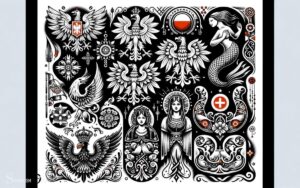What Does the Deer Symbol Mean? Gentleness, Grace!
The deer symbol represents gentleness, grace, intuition, and spiritual connection to nature and the divine.
Deer symbolism, often seen in various cultures and belief systems, is commonly associated with positive attributes and spiritual growth.
The deer is known for its graceful movements, gentle demeanor, and strong intuition, which makes it a powerful symbol for those on a spiritual journey or seeking personal growth.
In many cultures and spiritual belief systems, the deer symbol is revered for its connection to nature and the divine.
The deer’s grace and gentleness serve as a reminder to approach life with a soft and loving touch, while its keen intuition signifies the importance of trusting our instincts.
Key Takeaway
10 Symbolic Meaning Of Deer
| Symbolic Meaning | Description |
|---|---|
| Grace and Beauty | Deer are often seen as graceful and beautiful creatures, symbolizing elegance and aesthetic appeal. |
| Gentleness | They are known for their gentle and peaceful nature, representing traits like kindness and gentleness. |
| Alertness | Deer’s keen senses and vigilance are seen as symbols of awareness, being alert to one’s surroundings. |
| Innocence | In some cultures, deer are associated with innocence and purity, often linked to childhood or naivety. |
| Spirituality | Deer are sometimes seen as spiritual guides or messengers in certain belief systems and indigenous cultures. |
| Growth and Renewal | Shedding and regrowing antlers symbolize growth, transformation, and the cyclical nature of life. |
| Fertility | In many cultures, deer are associated with fertility, abundance, and the cycle of birth and rebirth. |
| Protection | Deer have been seen as protective symbols in some traditions, guarding against negative energies or harm. |
| Harmony | They represent the harmony between humans and nature, emphasizing the importance of balance in life. |
| Independence | Solitary behavior of some deer species symbolizes independence and self-reliance in various contexts. |
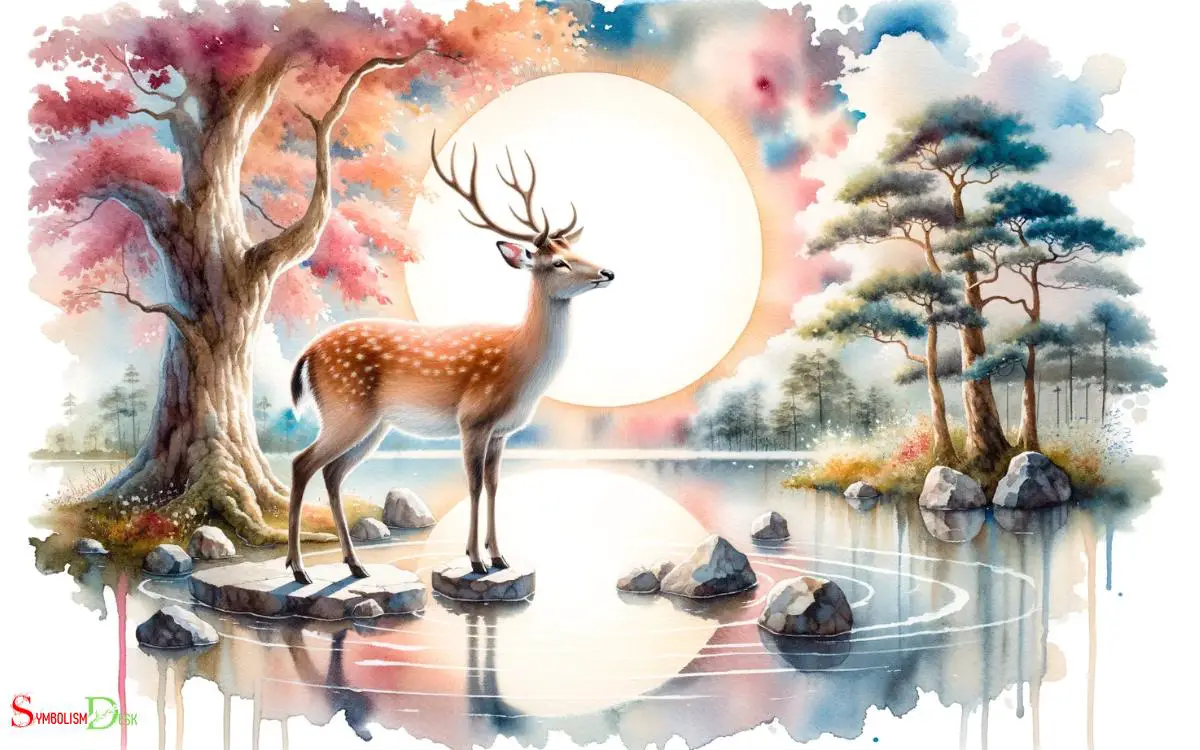
Understanding Deer Symbolism
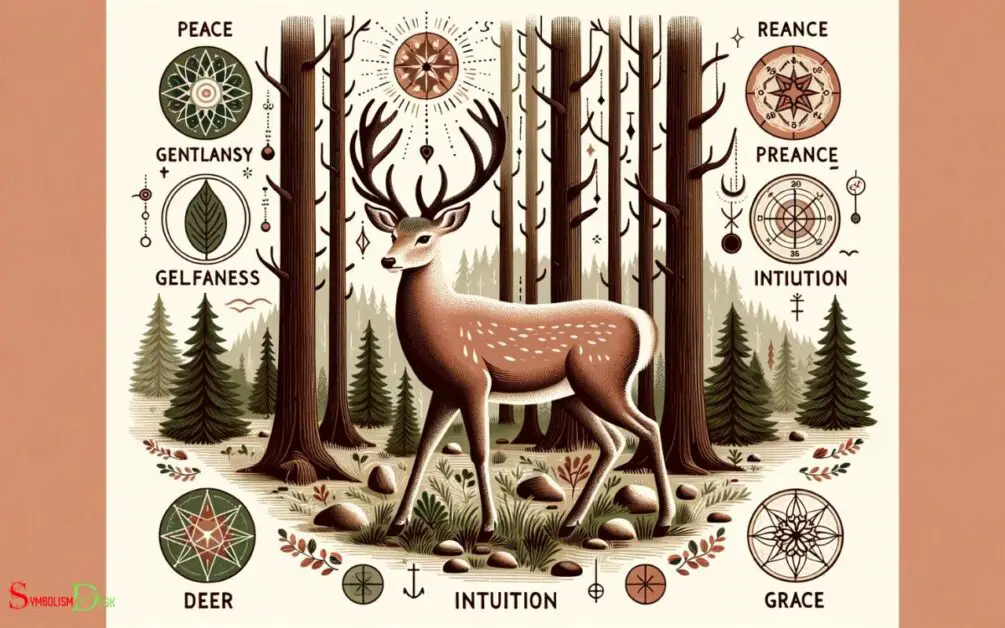
Deer are one of the most cherished animals, earning a place in the mythology and folklore of various cultures.
Deer symbolism relates to gentleness, innocence, and grace. Let’s delve into various cultures’ understanding of deer symbolism and what they represent.
The Symbolism Of Animals In Various Cultures
Various cultures attach different meanings to animals. In indigenous north american culture, the deer is a symbol of love, family, and kindness.
In chinese traditional culture, deer and stags are believed to represent auspiciousness, wealth, and achievement. In european folklore, the deer is known to be a symbol of purity, piety, and good luck.
Significance And Symbolism Of Deer In Different Cultures
Different cultures see deer symbolism in different ways.
Here are some examples:
- Native american culture: In native american culture, deer are a symbol of love, kindness, and family. They believed that deer communicate with humans through their spirit.
- Chinese traditional culture: Chinese used the deer as a symbol of prosperity and longevity, while in japan, deer were deemed sacred since they were believed to be messengers of the gods.
How Deer Symbolism Is Still Relevant Today
Even today, deer symbolism has not lost its importance, and people still use it in different meanings.
Here are some examples:
- Environmental conservation: In western cultures, the deer is considered a symbol of environmental conservation. As humans continue to destroy nature, preserving deer and their habitat becomes essential.
- Spiritually: People use deer as a symbol of spirituality, especially those practicing yoga. They believe that the deer represents calmness, alertness, and tranquility.
The Cultural Importance Of The Deer
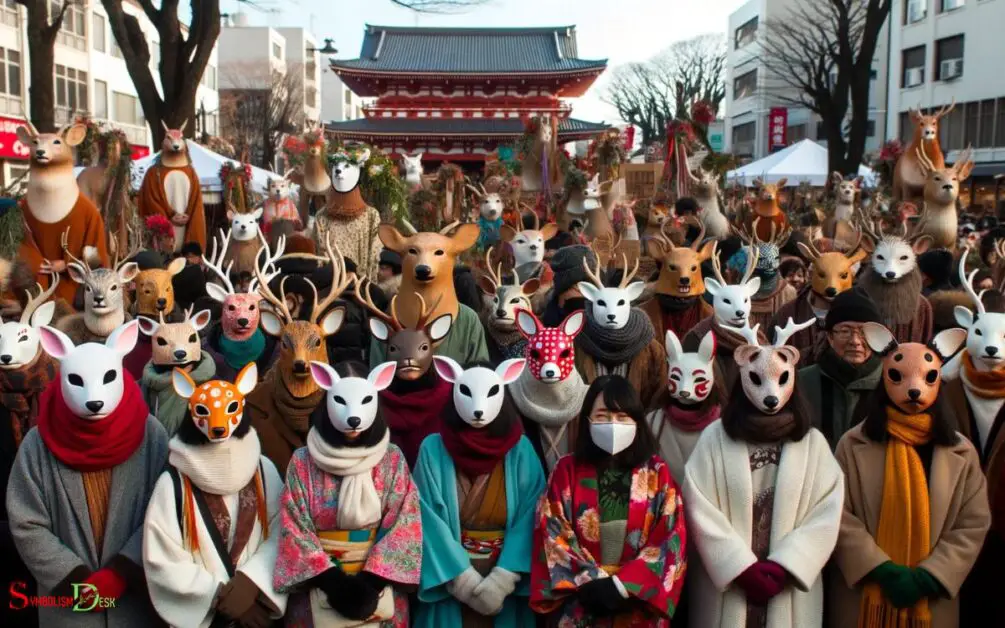
Deer symbolism holds great significance in various cultures worldwide. The deer has been a popular figure throughout human history, playing a vital role in art, literature, and religion.
In this section, we will explore the cultural importance of the deer in native american and eastern cultures, including their roles in mythology, folklore, ceremonies and traditions.
The Role Of Deer Symbolism In Native American Culture
Deers hold special meaning in native american cultures, and their symbolism varies depending on the tribe.
However, some commonalities exist, such as:
- Representing grace, gentleness, and agility
- Symbolizing sensitivity, intuition, and vigilance
- Believing that the deer can connect people to their inner self
- Being a messenger of peace and a totem animal for many tribes
History And Origins Of Deer Symbolism In Native American Culture
Deer symbolism in native american culture has roots in prehistoric times and continues today.
It is thought that hunters would offer thanks to the deer’s spirit for providing food and clothing.
Later, the native american tribes would create art and stories featuring deer to honor and celebrate their significance.
Importance Of Deer Symbolism In Native American Ceremonies And Traditions
Deers also played a crucial role in ceremonial life, with tribes often performing dances using deer antlers.
In certain tribes, young men would hunt deer to prove their manhood and earn the right to wear antlers made into a headdress.
Additionally, the deer is a central figure in the navajo night chant, a ceremony performed to restore balance and harmony to the world.
Deer Symbolism In Eastern Cultures
In many eastern cultures, deer are viewed as symbols of longevity, serenity, and abundance.
They are also associated with:
- The hanoverian dynasty in korea and their royal emblem
- Being the only animal that can find lingzhi, a fungus that holds medicinal properties, in chinese mythology
- Being the vehicle for vayu, the hindu god of wind and life force
The Role Of Deer Symbolism In Chinese And Japanese Culture
Deer hold a special place in chinese and japanese cultures, with similarities in their symbolism:
- They symbolize good luck, prosperity, and wealth
- Boys are often represented holding a deer in artwork and literature, and it represents their journey into adulthood
- The deer horn is a central figure in traditional chinese medicine, believed to contain healing properties
Mythology And Folklore Surrounding Deer In Eastern Cultures
In japan, there are numerous tales associated with deer. In one, a white deer is believed to possess the power to speak to humans and is seen as the messenger of the gods.
In buddhist lore, a deer appears before buddha, revealing that he had chosen a life of solitude instead of being reborn as a human.
In china, the goddess of mercy, guanyin, gives a white deer a sacred book which the deer then brings to a hunter.
The deer then transforms into a white dragon and flies away, signaling the hunter’s awakening to the truth.
The deer symbol has a rich history and deep cultural significance in both western and eastern cultures.
From native american tales to chinese medicine, the symbolism of deer continues to impact and inspire people worldwide.
What Does The Deer Symbol Mean In Christianity?
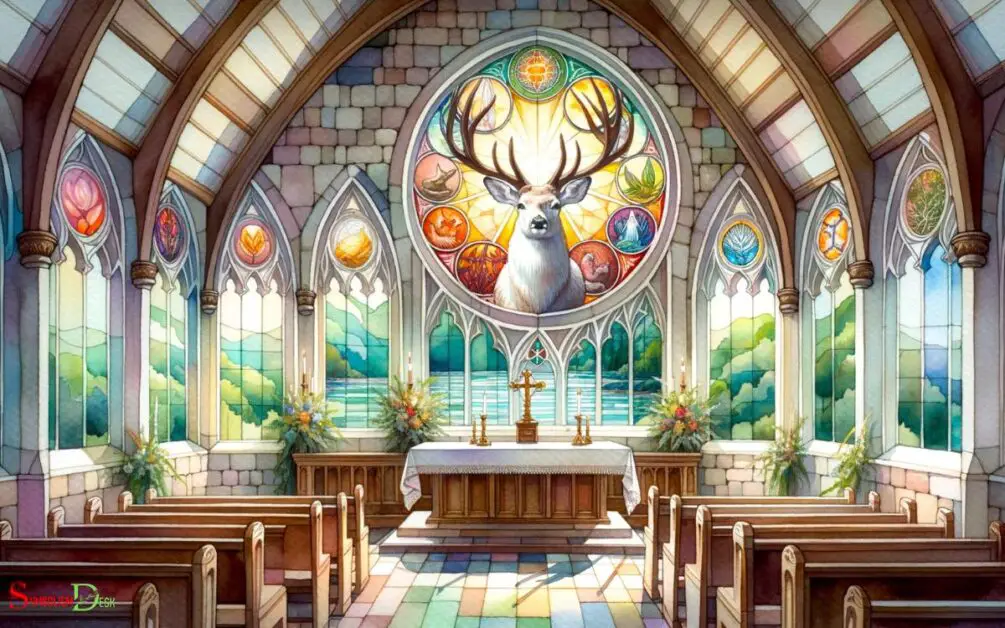
Deer symbolisms and meanings, since ancient times, has been prevalent in various aspects of life. In christianity, the deer signifies multiple concepts, including spirituality and transformation.
Deer Symbolism In The Bible
The deer is mentioned in the bible several times, portraying various concepts such as strength, grace, and speed.
Here are a few notable mentions:
- Stag or deer is an ancient symbol of godly people, often mentioned as ‘hart’ in the bible.
- In psalm 42: 1, the writer mentions a deer thirsty for water, referencing our thirst for god as beings.
- Elsewhere in the bible, it’s mentioned that a deer’s swiftness can be attributed to the help of god.
Analysis Of Biblical References To Deer
The animal symbolism in the bible has distinct meanings that portray spirituality and divinity.
Here are a few biblical references to deer:
- The deer’s thirst for streams of water in psalm 42: 1, signifies our thirst for knowledge, salvation, and transformation to become godly.
- In proverbs 5: 19, the deer advises you to stay fascinated with your spouse, just like a deer is fascinated with its mate.
- Deer’s grace and strength are compared to a person in song of solomon 2: 9, indicating the strength of god in us.
The Significance Of Deer As A Christian Symbol
Deer’s symbolism in christianity represents several concepts, such as:
- Transformation: Similar to a deer shedding its antlers and growing new ones, god also wants us to shed our old self and become a new person exclusively for him.
- Passion and endurance: Deer’s ability to run long distances without getting exhausted is used as an example of how christians should persevere as they follow christ.
- Spirituality: The concept of seeking and thirsting for water is the metaphor for seeking and thirsting for god.
Theological And Symbolic Meanings Of Deer In Christianity
Deer’s symbolism in christianity has essential theological and symbolic concepts.
Here are a few of them:
- In christianity, the deer is a symbol of god’s love, grace, and salvation, as the animal is often depicted in beautiful and pristine wilderness areas.
- The deer represents the righteous and godly people, and the horns represent the crowns they will receive in heaven.
- Christians also associate deer with courage, protection, and spiritual growth, as the stag’s antlers symbolize spiritual growth and maturity, and christians aspiring to have it.
The deer’s symbol in christianity has significant spiritual, theological, and symbolic meanings. Understanding its significance and adopting its traits can help christians establish a closer relationship with god.
Deer Symbolism In Literature And Art
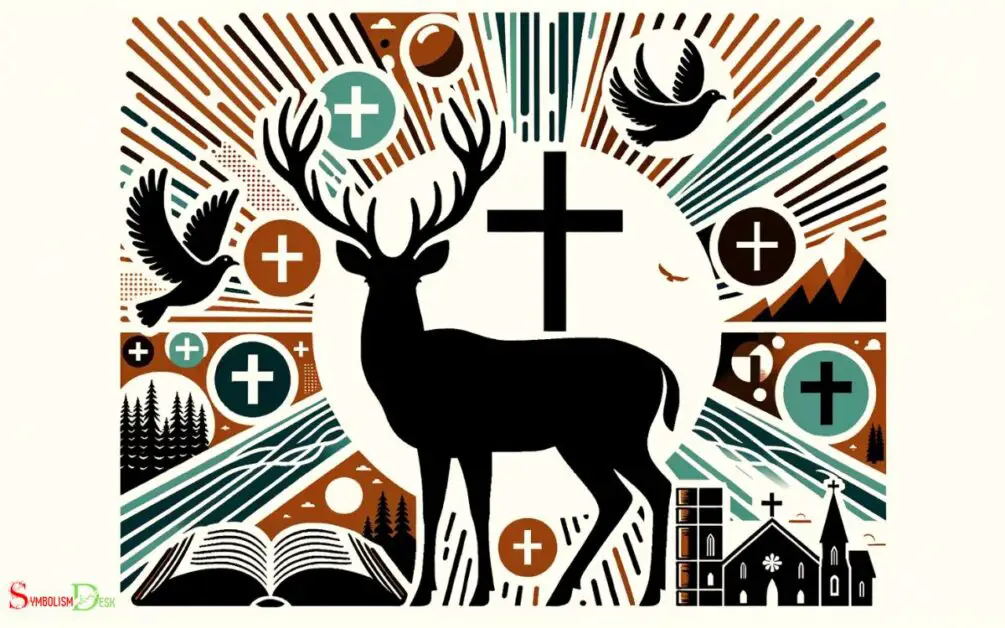
Deer has been a popular symbol in literature and art for hundreds of years. It represents a variety of meanings, including gentleness, grace, swiftness, and delicacy. The deer is also often associated with the idea of peace and harmony, as well as being in tune with one’s intuition and inner wisdom. In many cultures, the deer is seen as a spiritual guide or messenger, connecting the physical and spiritual worlds. Similarly, the dolphin symbol meaning is often interpreted as representing harmony, playfulness, and intelligence. Both animals carry significant cultural and spiritual significance in various traditions around the world.
Let’s explore the use of deer symbolism in both poetry and literature, as well as in various art forms throughout history.
Deer Symbolism In Poetry And Literature
Deer symbolism in poetry and literature dates back to ancient times. The animal is often portrayed as a graceful and shy creature that’s in tune with nature.
Here are some examples:
- In william wordsworth’s “the tables turned,” the poet urges readers to stop reading books and instead, connect with nature. He compares the stag to a “companionable form” that “sports with fast and giddy round.”
- In emily dickinson’s “there’s a certain slant of light,” the poet uses the deer as a metaphor for loneliness. She writes, “when it comes, the landscape listens / shadows hold their breath- / when it goes, ’tis like the distance / on the look of death.- / deer, of all the tragic graces / that ‘tis possible to conceive.”
- In rudyard kipling’s “the jungle book,” the deer is depicted as a timid and vulnerable creature that’s constantly hunted by predators. The main character, mowgli, protects a deer from being killed by a pack of wolves.
Analysis Of Famous Works Featuring Deer Symbolism
Throughout history, many famous works have featured deer symbolism.
Here are some examples and what they represent:
- In the bible, deer are often used as a metaphor for longing and thirsting for god.
- In greek mythology, the deer represents purity, grace, and swiftness. The goddess artemis is often depicted with a deer by her side.
- In chinese culture, the deer is a symbol of good luck, wealth, and longevity.
Deer Symbolism In Art
Deer have also been a popular subject in art. They’ve been depicted in paintings, sculptures, and other art forms.
Here are some examples:
- In japanese art, deer are often portrayed as messengers of the gods and are seen as symbols of peace, prosperity, and good fortune.
- In european art, deer are often depicted in hunting scenes and symbolize the thrill of the hunt.
- In native american art, deer are a common motif in jewelry, pottery, and other art forms. They represent the spirit of the forest and are believed to bring luck and good fortune.
The role of deer in various art forms throughout history is vast. They’ve been used to represent many things, including serenity, beauty, and spirituality.
Deer symbolism has been a popular theme in literature and art for centuries. It represents many things, including gentleness, grace, swiftness, and delicacy.
From poetry to paintings, the deer has been a common subject in various art forms throughout history.
Its significance and meanings are a testament to its enduring popularity and enduring beauty.
Conclusion
The deer symbol holds a great significance across cultures and time. It represents various qualities, such as sensitivity, grace, peace, and intuition that are vital in our lives.
Its spiritual significance and the close association with nature make it a powerful symbol of spirituality and interconnectedness.
Whether it is through mythology, folklore, or personal experiences, the deer symbol speaks to our souls in profound ways.
As we seek to connect with our inner selves and the world around us, the deer symbol can serve as a beautiful reminder of the importance of compassion, gentleness, and harmony.
Its symbolism can inspire us to live our lives with purpose and selflessness, as we navigate the complexities of this world with grace and poise.
So, let us embrace the deer symbol with open hearts and minds, and celebrate the beauty of our interconnectedness as we journey constantly in this world.


